Ardakan Carpet
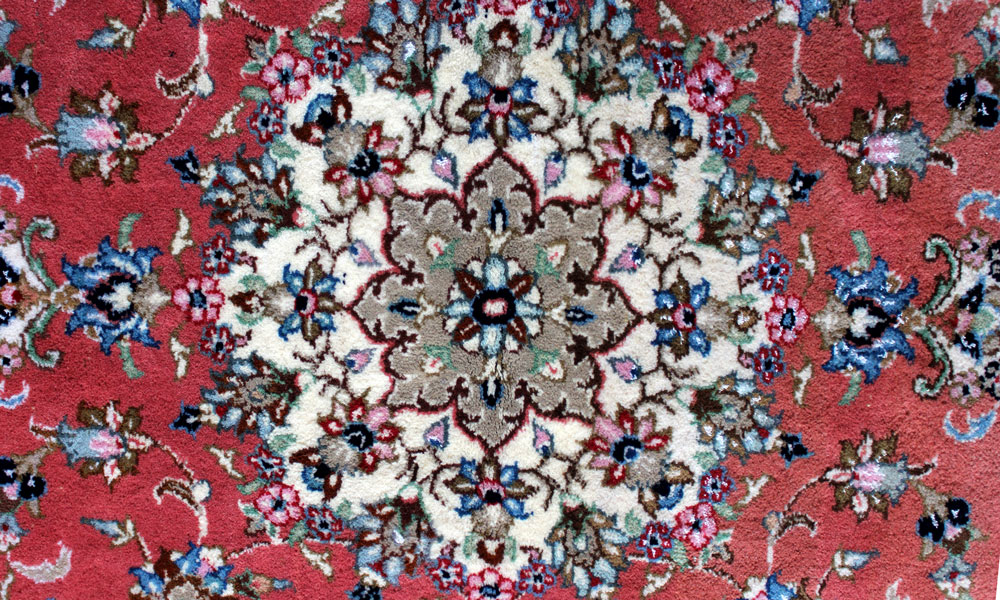
Persian Ardakan Carpet
Discover the Rich History of this Hand-Woven Carpet
|
birthplace |
Warp |
Weft |
Dyeing |
Ardekan, Iran |
Cotton |
Wool / Fluff / Silk |
Herbal / Chimistical |
|---|
Where is the Ardakan City?

The Historic Heart of Ardakan City
Ardakan (Also known as Ardekan and Artagan), resides within the Yazd province and is renowned for its handcrafted treasures like the Ardakan handwoven carpets and delectable culinary delights such as Arde halva derivatives, including cakes and sweets. Situated to the south of Yazd, Ardakan shares its northern border with the city of Nain.
With its roots tracing back thousands of years, Ardakan boasts a rich history reflected in its ancient monuments. As of 2015, the city's population was estimated at 75,000 inhabitants. While Ardakan embraces its traditional heritage, its people are also engaged in modern occupations, particularly within the tile and ceramic factories that dot the landscape, aligning with contemporary global industries.

What is Ardekan Rug?
The fusion of techniques from various Iranian cities is evident in Ardakan carpets. Drawing inspiration from Kashan carpets for design and knotting methods, and adopting weaving techniques akin to those of Kerman carpets for wefting, clawing, and facing, Ardakan carpets showcase a harmonious blend of influences. This combination of the best Persian carpet-making traditions has resulted in one of the finest and most durable floor coverings globally, offering high quality at a reasonable price.
Throughout history, Ardakan has been renowned for its diverse handicrafts, including Zilo, Chain weaving, and Canvas. The city's artisans have consistently upheld the highest standards of quality, resulting in Ardakan carpets crafted to exacting specifications.
Characterized by Persian knots, Ardakan handwoven carpets epitomize exceptional quality. These carpets typically incorporate four main raw materials: wool, cotton, silk, and fluff. While wool and cotton are predominant, silk and fluff are sparingly used, further enhancing the exclusivity and allure of Ardakan carpets.
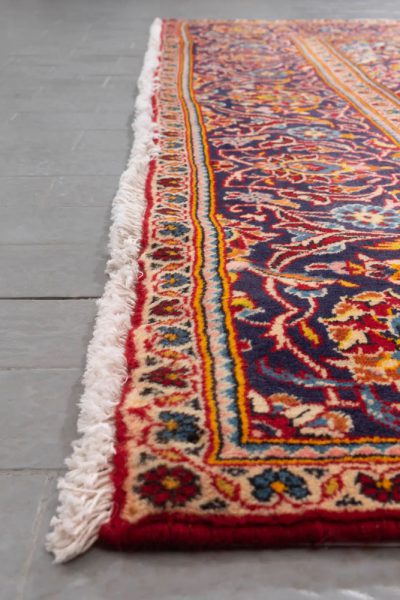
Who Was the First Idea?
Ardekan Carpet weaving traces its roots to more than a century ago in the ancient Charkhab district of the city.
However, historical research suggests that it wasn't until the Qajar period (1789-1925) that the industry truly flourished, buoyed by the burgeoning European markets that had evolved since the Safavid era (1501-1736). This period marked a turning point as the persian carpet market witnessed unprecedented growth, attracting foreign investors who established carpet-weaving workshops in cities like Kashan, Kerman, Arak, and Isfahan.
With foreign influence came a transformation in carpet designs and motifs, reflecting the fusion of international tastes with traditional Iranian craftsmanship.
The hallmark of Ardakan handwoven carpets extends beyond their traditional texture and utilization of entirely natural materials; it's their notable thickness and density. This attribute ensures that these rugs not only exude authenticity as Persian floor coverings but also provide substantial warmth, making them an ideal complement to modern décor
Brief Overview of Technical Details
Design and Pattern:
Ardakan carpets feature authentic Iranian motifs, often intricate and visually striking. Inspired by traditional designs like the hunting ground and medallion patterns, Ardakan rugs showcase rich heritage. These designs, influenced by Kashan carpets, are complemented by unique Ardakan motifs, such as palmette flowers and solar fringes. Modern Ardakan carpets feature innovative designs like Blossom and Saba, incorporating vibrant colors like red, pink, and jade green, adding charm to contemporary decor.
Quality:
The classification based on quality for Ardakan carpets is determined by the density or height of carpet knots and the quality of carpet materials. Ardakan carpets are categorized based on the "toon" or "raj" unit, which refers to the count of each thread in the carpet. The higher the number of "toons," the better the quality of the carpet.
For instance, a 6-meter Ardakan carpet may be classified as 42, 40, or 35 raj, with 42 raj being the highest density equivalent to 840 tons in a 6-meter Ardakan carpet. Generally, the higher the density or the number of knots per centimeter, the higher the quality of the carpet.
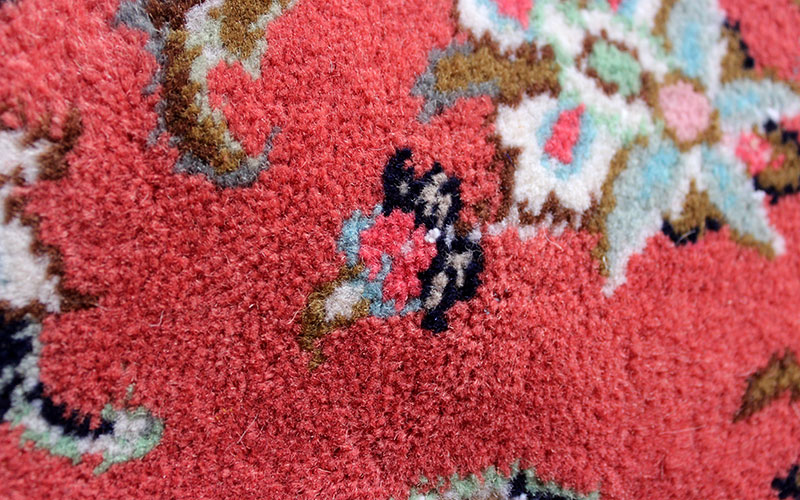
Face of the Carpet
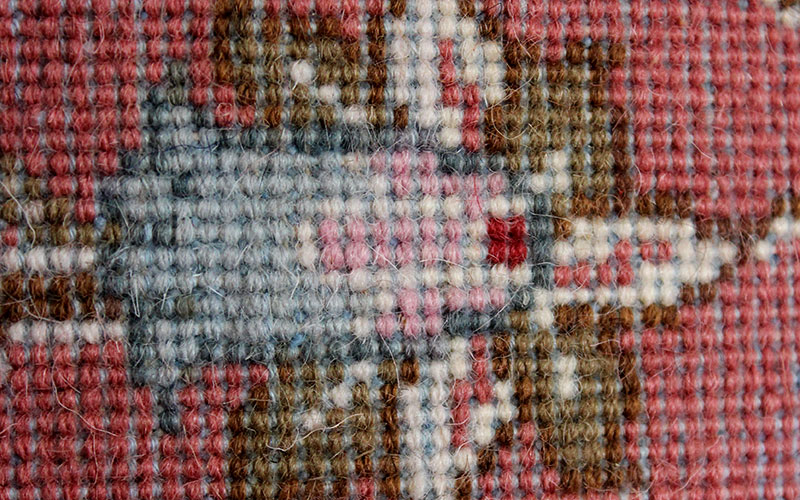
Back of the Carpet
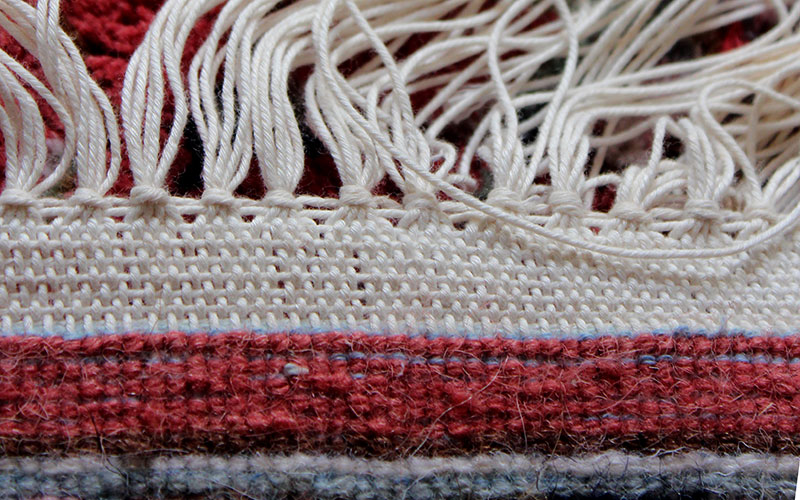
Fringe of the Carpet
